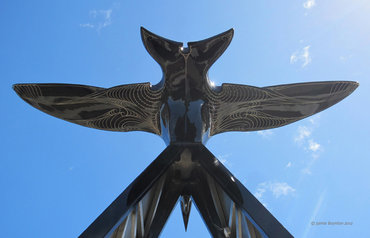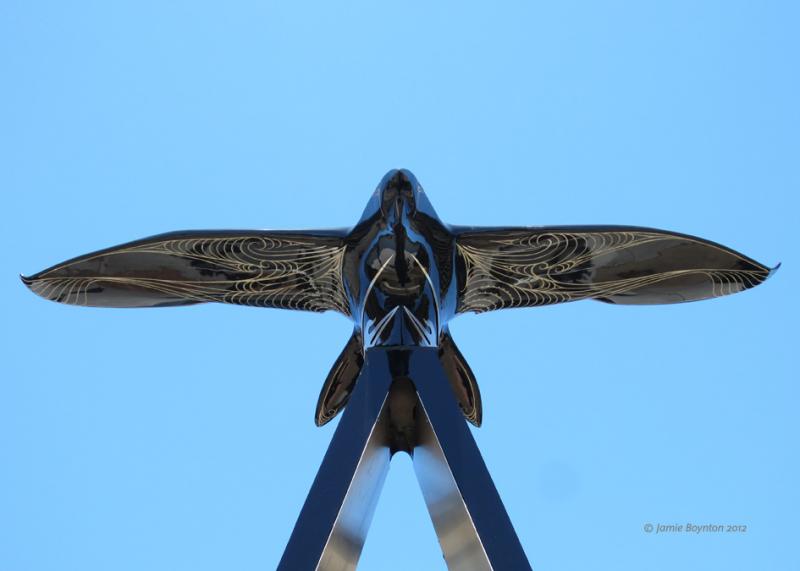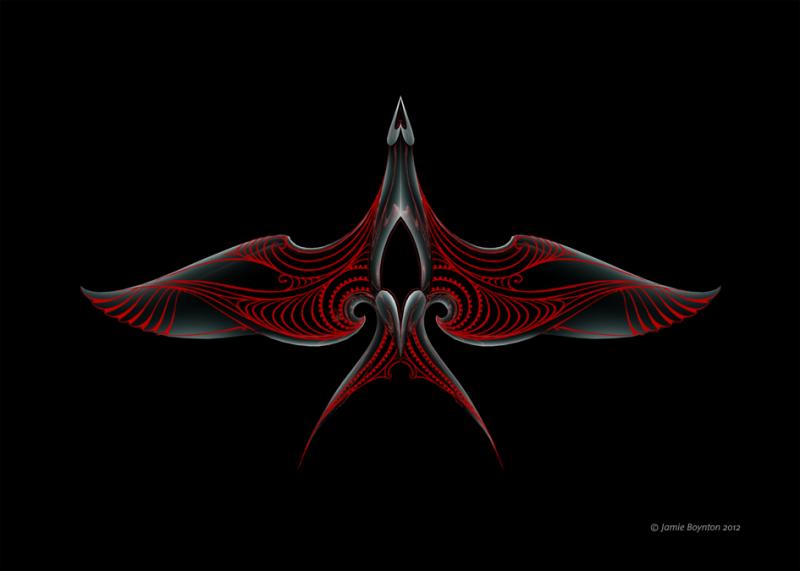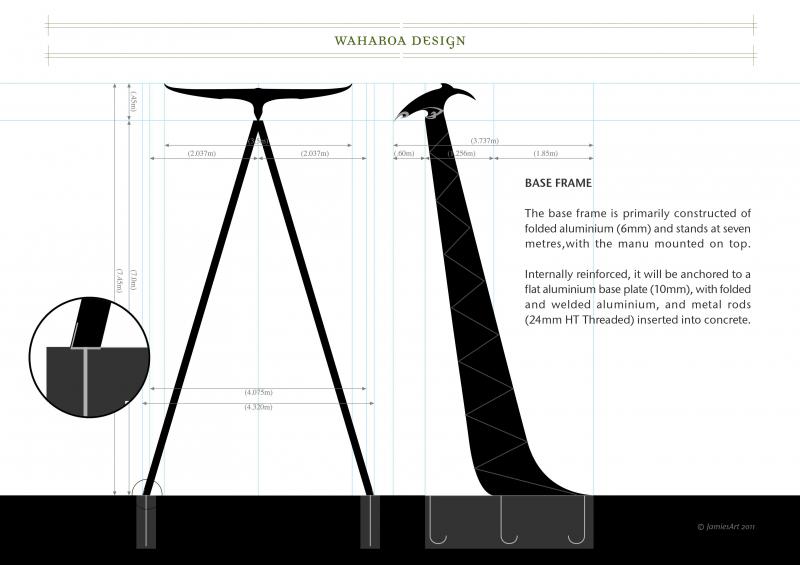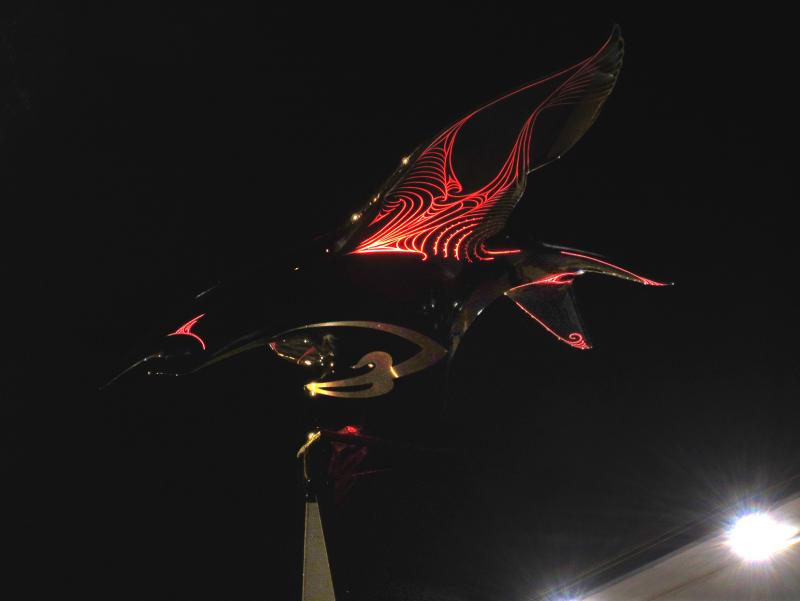Indigenous brands, Maori business, Kaupapa Growth and innovation, collaborative pilot projects, culture connection and exchange, design enabled economic, culturally enriched.
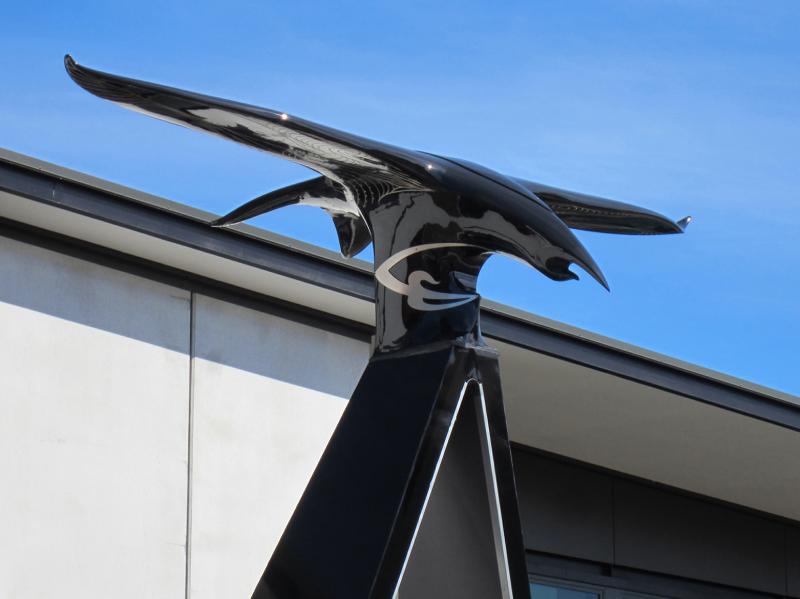
Manu Sculpture
Manu sculpture in place outside the new campus buildings at Te Whare Wananga o Awanuiarangi (Indigenous University).
Click on thumbnails to enlarge
Location:
Whakatane
Nga Aho practitioner:
Jamie Boynton
Manu Sculpture
ARTIST’S SYMBOLIC MANU LAYS DOWN WERO TO ALL WHO ENTER
Article written and published by Moana Dawson
A five-metre illuminated sculpture of a symbolic bird stands as a modern wahanui (gateway) to Te Whare Wānanga o Awanuiāngi: indigenous-university’s new Whakatāne campus.
Manu (bird), a jet-black fibreglass sculpture by contemporary Mäori artist Jamie Boynton (Ngai Tühoe, Te Whakatāhea) is one of the cutting-edge artistic and cultural elements that feature at the Wānanga’s striking new facility. Manu is a metaphor for the challenge laid down by Awanuiārangi to its students, Boynton says.
“The manu is leaning forward, and its beak is open as it challenges those who enter to spread their wings and fly, using the Wānanga as their waka.”
The sculpture sits at the apex of two adjoining legs representing the tauihu (double hull) of Mātaatua waka as a symbol of unification. It relates to the story of the two manu, Mumuhau and Tākeretou, which led the waka to Whakatāne.
“That kōrero captured my imagination. It presented a perfect metaphor for what the Wänanga is striving to achieve, which is to empower our people and inspire them to spread their wings, to step out and strive for new and great things. It relates to the Wānanga’s vision and guiding whakataukī to pursue knowledge to the greatest depths and broadest horizons.”
“The sculpture symbolises the energies of those two guiding manu rather than being one or the other. There are differing stories and perspectives on those birds, so the underlying meaning and values are what I focused on.” The concept also fit perfectly with the techniques Boynton had been exploring, particularly using light to represent mauri (life force) as part of the sculptural form.
“I like to work with light and glass. It’s a really lovely way of illustrating the spiritual aspect, which is difficult to portray because it is non-physical. You can create a really strong sense of wairua through the use of glass, light and reflection.”
“My work is about re-igniting the wisdom of our ancestors in a way that inspires future generations. It is taking the ancient art of whakairo and considering how we can move forward and remain leading edge.”
“I also wanted to get away from what you expect a Wahanui to be. Most Wahanui involve carvings of ancestral figures. This is a departure that expands the concept and pushes the boundaries.”
The Manu is illuminated at night, projecting coloured light through whakairo patterns on the undersides of the wings. This is achieved using eight LED lights inside the hollow fiberglass mould. Measuring five meters from wingtip to wingtip, and weighing about 300kg, the sculpture was formed around an internal frame of aluminum and took shape over more than six months in the artist’s studio.
Boynton said one of the fascinating aspects was researching materials. “I looked to the marine industry because it deals with the most extreme environments and part of my brief was to create something that would last at least 50 years.”
He consulted America’s Cup yacht suppliers, and the team at Browne & Smale Panel beaters in Opotiki painted and coated the sculpture using materials and techniques recommended by them.
Boynton says the project was hugely exciting and challenging. “It stretched me far beyond what I thought I was capable of. It’s about exposing communities to a different viewpoint, a Māori viewpoint: broadening perspectives of what Māori is and also broadening Māori perspectives of what Mäori is. It’s also about moving our culture forward by contemporising our stories and traditions.”
---
The Manu was installed in time for the opening in December, 2012. It now stands as an iconic landmark for the Wänanga and the Eastern Bay of Plenty.
“There were big debates about the bird Mumuhau that has since become an icon of the town of Whakatāne. At first it was difficult to picture how it would look. It was not until Mumuhou was installed in front of the administration building now called Te Kuraimoana (wife of Takeretau) that we could all admire the vision of the artist Jamie Boynton, who designed it.”
Distinguished Professor Sir Hirini Moko Mead

